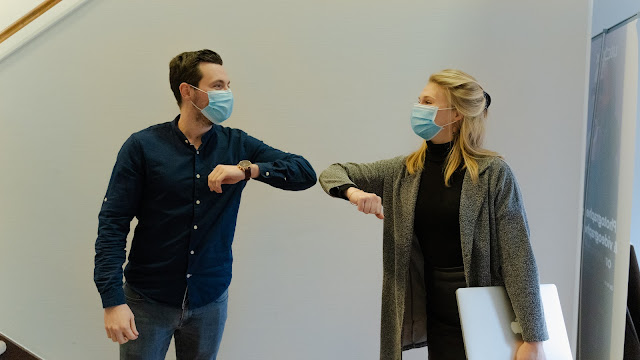Washingtonians, it's time: If you haven't already, you should start wearing a mask inside again.
The country and region are experiencing an increase in viral respiratory diseases, mostly influenza, and RSV, while COVID-19 levels are starting to creep back up. This has led to new recommendations from 12 county health officers and 25 hospital executives. Particularly pediatric facilities, like Seattle Children's, have been operating at capacity for months now, according to numerous long-time employees.
According to the officials' advice published on Friday, the flu is anticipated to spread for months.
According to the warning, "as health officers and health care leaders striving to promote the health of Washington people, we encourage that everyone uses a premium, well-fitting mask when around others in indoor settings to prevent against both acquiring and spreading these infections to others."
Along with Dr. Anthony L-T Chen of the Tacoma-Pierce County Health Department, Dr. James Lewis of the Snohomish Health District, Dr. Jeff Duchin of King County's public health department, and health officers from the counties of Thurston, Clallam, Jefferson, Whatcom, San Juan, Clark, Pacific, Skamania, Kittitas, and Kitsap are among the signatories.
Aside from UW Medicine, Virginia Mason Franciscan Health, MultiCare Health System, Kaiser Permanente Washington, Seattle Children's, Providence Swedish, and the Washington State Hospital Association, the recommendation was also signed by executives from these hospitals and state leaders.
The director of the Centers for Disease Control and Prevention advised everyone to resume their usual masking behaviors earlier this week as COVID, the flu, and RSV combine to form a "tripledemic,", especially on public transportation and while traveling by air.
Though Los Angeles County health authorities suggested this week a fresh order might be enforced in January if hospitalizations escalate, according to The Los Angeles Times, few counties statewide appear to be actively reviewing mask orders. However, a lot of regional health authorities, such as those in Oregon, Colorado, New York, and Massachusetts, have started to aggressively advise individuals to wear masks indoors.
The number of flu-related deaths in Washington is rising. Three children were among the 26 residents who have perished from influenza as of Friday.
The recommendation states that those with other health conditions, such as asthma, diabetes, or heart disease, as well as children under the age of five (particularly those under two) and adults over 65 are generally most at risk from the flu.
According to state data, COVID cases and hospitalizations, which had been going downward for months, are also beginning to increase once more. Since the beginning of November, the state has seen an increase in COVID hospitalizations, going from 42 to 64 on average each day.
Doctors advise visiting an urgent care center instead of an emergency department if you have non-life-threatening injuries or diseases, such as coughing, wheezing, sore throat, minor dehydration, or fever. Doctors still advise going to the ER if you have breathing problems, unconsciousness, extreme dehydration, or other urgent symptoms.
This season, health officials and hospital administrators stressed the importance of using multiple layers of illness prevention. Washingtonians should improve indoor air quality, stay home from work and school when unwell, have a plan for prompt COVID and flu treatment for people at increased risk of severe illness, and be immunized against the flu and COVID, according to the advice.
Duchin, the public health officer for King County, stated in a separate statement that "this joint statement from a broad coalition of public health and health care experts is an indicator of our shared degree of concern." During this respiratory virus season, there are simple, efficient procedures that may and should be implemented at the community level to decrease serious infections and the burden on the healthcare system.




.png)
0 Comments